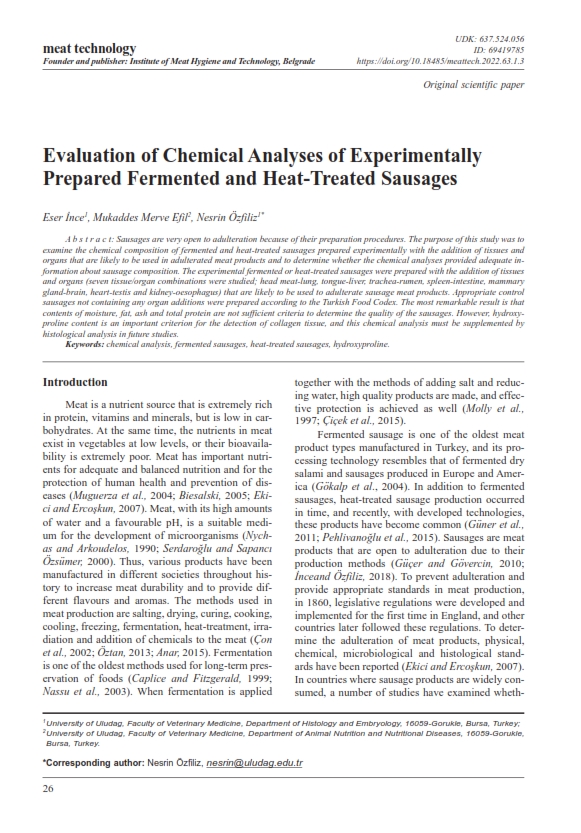Evaluation of Chemical Analyses of Experimentally Prepared Fermented and Heat-Treated Sausages
Abstract
Sausages are very open to adulteration because of its preparation procedures. The purpose of this study was to examine the chemical composition of the fermented and heat-treated sausages prepared experimentally with the addition of tissues and organ-containing products that are likely to be associated with adulterated meat products and to determine whether the chemical analyses provided adequate information about sausage composition. The fermented and heat-treated sausages prepared experimentally with the addition of tissues and organ-containing products (Head meat, Lung, Tongue, Liver, Trachea, Rumen, Spleen, Intestine, Mammary gland, Brain, Heart, Testis, Kidney and Esophagus) that are likely to be associated with adulteration in meat products and the fermented and heat-treated sausages not containing any organ additions were prepared according to Turkish Food Codex. The most remarkable result is that moisture, fat, crude ash, and total protein are not sufficient criteria to determine the quality of a product. As a result, hydroxyproline is an important criterion for the detection of collagen tissue and chemical analyzes should be supplemented by histological analyzes in studies to be performed thereafter.





